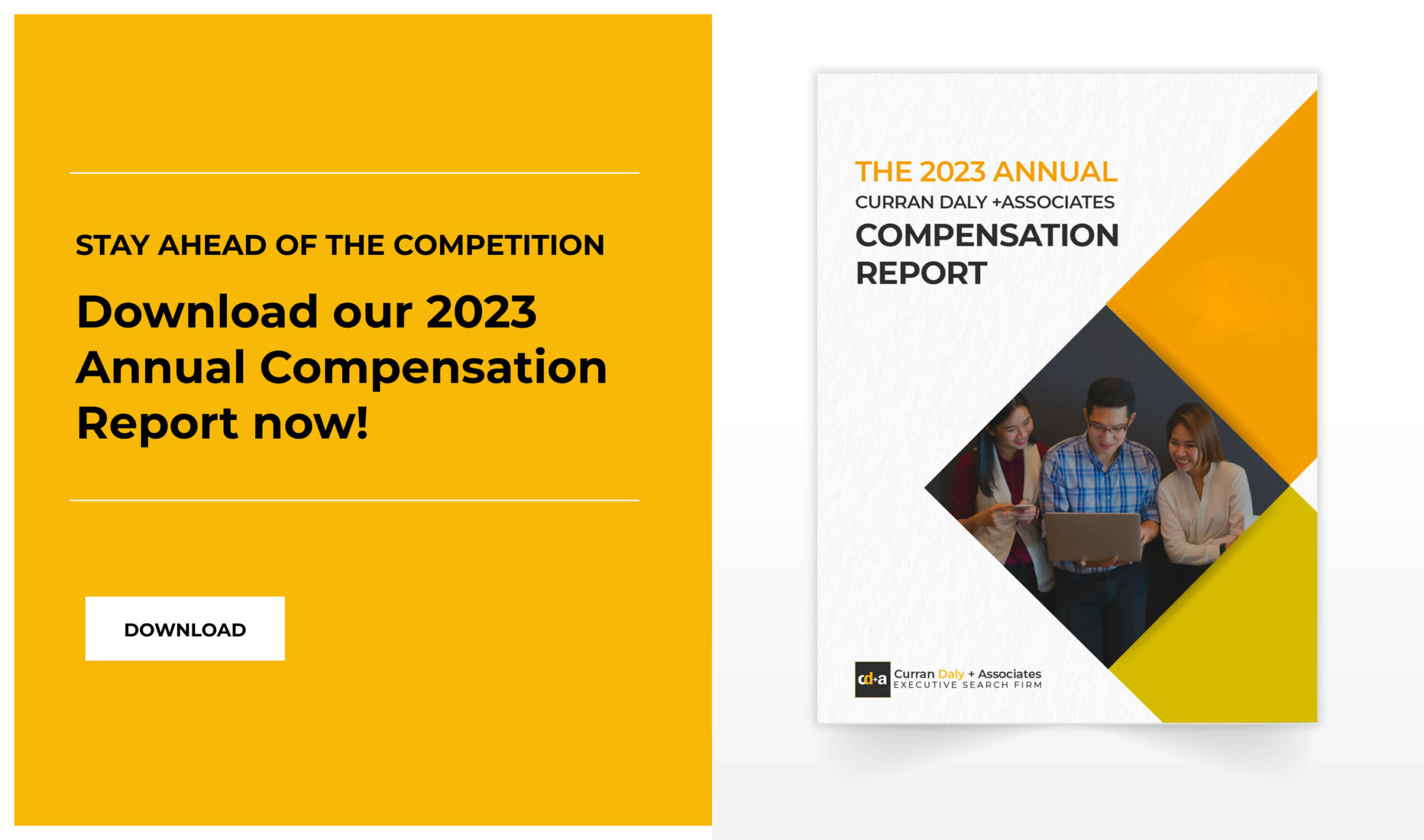- Diversity in the workplace is essential for businesses to succeed, as organizations with diverse executive teams have a higher chance of success.
- Equity and inclusion create more value, innovation, and better decision-making; they focus on being surrounded by various perspectives and recognizing each individual’s circumstances.
- Five essential factors for any successful DEI initiative include: understanding the core issues; defining success; having invested business executives; tailoring customized solutions for each context; and consistent monitoring and adjustments.
- Ways to promote DEI include becoming mindful of implicit bias; communicating its need to assess and address biases; promoting equal pay; strategically building a comprehensive training program; recognizing holidays of all cultures; making it easy for employees to join ERGs, and diversifying teams.
The evidence is clear — diverse organizations are far more effective than homogenous ones. According to a report from McKinsey, businesses that embrace ethnic diversity have a much higher chance of succeeding than those that don’t. For example, organizations with executive teams composed of 30% or more women increase their odds of outperforming competitors by 48%.
In addition, Deloitte Insights discovered that companies with inclusive cultures create more value and are twice as likely to hit or surpass monetary goals. They are three times more likely to be high-performing, six times more likely to innovate and stay agile, and eight times more probable to secure better business outcomes.
But what does diversifying your workplace mean in terms of being truly inclusive?
Defining Diversity, Equity, and Inclusion (DEI) in the workplace
McKinsey noted that diversity represents who is included in the workplace. It includes but isn’t limited to the following:
- Gender diversity: How are men, women, and nonbinary individuals represented within a particular population?
- Age diversity: Is the group composed of individuals from a single generation, or is there an assortment of ages present?
- Ethnic diversity: Is there a shared national or cultural heritage among members of the same group, or do they originate from varied backgrounds?
- Physical ability and neurodiversity: Do we consider the viewpoints of individuals living with disabilities, visible or otherwise?
Although these are a few basic examples, diversity can take many forms. These characteristics may be inherent at birth or experienced throughout life. In essence, it’s about being surrounded by various perspectives.
While often used interchangeably, equity and equality are not the same. If a company seeks to treat its employees equally, it implies that everyone has similar needs, experiences, and opportunities. However, this is only sometimes true – particularly in diverse working environments. To ensure fairness for all staff members, organizations should recognize each individual’s distinct circumstances while providing equal access to resources – this is what equity strives towards.
Lastly, inclusion is an important concept in many institutions and workplaces as it creates a sense of belonging and camaraderie, leading to greater productivity, innovation, and better decision-making. The workplace needs to be actively engaging with diversity and fostering equity, removing systemic barriers, and creating an environment where everyone feels valued, welcomed, respected, and heard to have an inclusive workplace.
While we are making progress to promote these initiatives, the reality is that there is still a long way to go. A study revealed that 61% of employees feel like they have to ‘cover’ or conceal some part of their identities (such as physical appearance, affiliations, beliefs and associations) for them to fit into their work environment, preventing them from showing up fully authentic at work.
Diversity alone is a great step forward, but to truly make sure all employees feel like they belong in your workplace and are accepted for their differences, equity and inclusion must be combined. Belonging entails feeling safe enough to express oneself without being judged or overlooked. Achieving this remarkable sense of belonging within an organization requires the combination of diversity, equity, and inclusion initiatives working together.
Five essential factors for any successful DEI initiative
An ever-increasing number of businesses, regardless of industry or location, are beginning to understand the urgency and importance of Diversity and Inclusion efforts. As such, more companies engage in meaningful conversations on DEI initiatives intending to drive progress.
Here are five essential success factors in DEI initiatives:
Comprehensive understanding of core issues
Knowing the particular DEI opportunities in your business can help you decide what to prioritize and invest in, set objectives, and make solutions. To work out the challenges thoroughly, this would start by pouring over data and entering employee feedback surveys and insights from the target population obtained through interviews or focus groups.
Well-defined definition of success
After carefully selecting an area of opportunity, setting precise and measurable short-term and long-term objectives is essential to guarantee success. Additionally, explaining the cause behind the organization’s focus on this effort – how it aligns with its values, mission statement, and business outcomes – can motivate employees to take significant actions.
Invested business executives
When executives are deeply committed to promoting diversity and inclusion, it can tremendously impact the success of initiatives. The CEO and other executives should set DEI as an essential company priority, hold themselves accountable for results instead of merely inputs or activities, be role models that display the desired changes they wish to see, and provide resources such as budgets, experts in relevant fields, and timelines towards achieving their goal.
Customized solutions tailored for each context
Developing solutions to tackle the root cause of a problem, such as implementing necessary changes in processes and methods, can boost effectiveness and sustainability. For the solution to succeed, it is essential to give employees proper training on how to support the desired change while also inspiring them with their ideas.
Consistent monitoring and adjustment
By evaluating progress against the desired outcome, executives can monitor the efficacy of their solutions and make modifications accordingly to ensure maximum impact. This also aids them in utilizing company resources better.
Methods in Promoting Diversity, Equity, and Inclusion in the Workplace
Building a culture of equity and inclusion is more than hiring people with diverse backgrounds. To create sincere, lasting change in the business landscape, companies must take active steps to ensure equal treatment across every employee experience – from recruitment to day-to-day operations.
True diversity goes beyond simply filling positions; organizations should strive for meaningful progress that affirms all voices at work and uplifts their potential.
Here are ways in order to foster a diverse, inclusive, and equitable workplace:
1. Become mindful of implicit bias.
Real change begins with developing an understanding of bias and gaining awareness. Unconscious biases, which can be buried beneath the surface, encompass different associations and feelings that do not necessarily align with our stated beliefs or values. Therefore, paying particular attention to unconscious bias for true transformation is crucial.
Leaders have the responsibility to help their employees comprehend how unconscious bias can influence them and what steps reinforce such biases. One practical way of increasing awareness and fighting unconscious bias is by motivating each team member to reflect upon, challenge, and evaluate any personal prejudice or assumptions they may hold.
Taking note of times when stereotyping occurs will aid individuals in being more aware as they bring those preconceived notions to the forefront. This practice assists people in recognizing when any judgments start to form so that countermeasures can be taken and biases avoided.
2. Communicate the need for assessing and addressing biases.
Leaders and employees can manage bias in the workplace and cultivate more inclusive atmospheres through understanding cultural humility. Developing a deep appreciation of different cultures involves reflective analysis and being open to ongoing learning opportunities to understand other people’s views with respect and empathy. Becoming culturally conscious is an iterative process that must be cultivated over time.
Organizations can assist their employees in managing unconscious bias through technology and training that offers direction on how to proceed. In the Harvard Business Review, Joelle Emerson says that diversity or unconscious bias training may cause people to become defensive, but utilizing technology helps combat this issue.
She adds that educating ourselves on unconscious bias can assist in minimizing our defensive reactions since we must understand that someone’s malicious character doesn’t cause these. Ultimately, it is human nature.
3. Promote equal pay.
Managers must strive to give their employees a level playing field by providing equitable opportunities. Fortunately, organizations can utilize analytics to recognize which workers are underpaid for similar roles or responsibilities. Through data analysis, executives can quickly locate any wage inequality amongst the team and explore patterns within various departments to pinpoint potential problems from the source.
Utilizing this knowledge can assist in recognizing any potential disparities, such as those experienced by people of color, within certain areas of the business, which may be evidenced through discernible patterns or trends.
4. Strategically build a comprehensive training program.
By offering diversity training as an option instead of making it mandatory, businesses can foster a more effective environment and help their employees understand the nuances that come with cultural differences in how we work and interact. These sessions may cover topics ranging from communication styles and sense of self to time management approaches or conflict resolution strategies.
Organizations should prioritize training programs tailored to their teams and diversity, equity, and inclusion objectives. Leveraging internal resources and external consultants can help develop customized workshops for the entire organization or specific departments, providing a comprehensive approach to cultivating inclusivity.
For successful training programs, leaders must be explicit in their communication about why the program is occurring, what goals are being targeted by it, and where participants should go from here. This will keep trainees engaged and allow them to see how these learnings contribute to broader company objectives.
5. Recognize the holidays of all cultures.
Embrace diversity and cultivate inclusivity by highlighting various religious and cultural holidays. If you’re preparing a team call or meeting, ask the people present about their holiday plans if it is a manageable audience. Utilize your company’s intranet to keep employees informed on multicultural religious celebrations or festivities – be respectful when scheduling meetings while considering that everyone has unique needs, which may necessitate flexibility.
6. Make it effortless for your employees to take part in Employee Resource Groups (ERGs).
ERGs are essential for constructing a culture of connection and inclusion. Employers can also incentivize participation by creating varying pay codes so employees attending ERG meetings don’t need to worry about tracking their time. Additionally, they should provide toolkits or guidebooks to motivate staff members who want to start a new ERG. Doing this will ensure that your team feels seen and heard while fostering an environment of respect and unity.
Obtaining support from executives is also essential for success. An executive or leadership sponsor may assist in creating visibility, stimulating innovative thinking, and fostering greater understanding. They can also ensure that ERG initiatives are completely aligned with business objectives.
A senior leader’s sponsorship will demonstrate organizational commitment to enhancing diversity, equity, and inclusion practices.
7. Diversify your teams.
According to Jacob Morgan in INSIGHTS, author of “The Employee Experience Advantage,” a crucial part of diversity is understanding and learning from distinctive perspectives. As he put it, having diverse teams on board is like playing chess with awareness of all 64 squares instead of getting stuck only in one area – whether that be different geographies or the same department/team. When looked at through workplace lenses, this analogy implies being unable to move forward when confined within a specific region or one’s group.
A team of varied talents brings a broadened perspective, inspiring new ideas and inventive solutions. If you work in an environment with the same people, consider inviting someone with different experiences to contribute insight into your next initiative or project. Think outside the box by selecting individuals with various genders, cultural backgrounds, or ages.
8. Encourage Continuous Feedback.
By actively encouraging employees to share feedback, organizations can better perceive what is occurring beyond the surface level. Through Pulse Surveys, business leaders will be equipped with critical insights which enable them to make well-informed decisions and eradicate any forms of discrimination or unfairness within divisions or departments in the company.
By leveraging anonymous employee pulse surveys, Human Resources leaders and managers can gain vital insights to take immediate action on minor issues and shape their long-term strategies. Employees should be motivated to utilize engagement tools that allow for transparent communication regarding their feelings.
9. Evaluate corporate policies.
Employers must evaluate all parts of their business that could contribute to discrimination. Establishing and upholding equitable company policies and fostering open dialogue between staff on internal issues can be powerful tools in eliminating discriminatory practices.
Poor interpersonal interactions are often the leading cause of employees leaving organizations. Fortunately, employers can promote a culture of positivity by revamping their policies to address and replace any negative processes or conversations with more constructive ones.
10. Monitor progress over long-term periods
Establishing a diverse, equitable, and inclusive culture is no simple feat. Creating meaningful changes in workforce strategy takes time. Therefore, businesses must set measurable goals and track progress over time to determine what strategies are worth retaining or replacing. Maintaining this level of accountability will help ensure that all stakeholders stay focused on the long-term objectives while providing necessary feedback for further improvements along the way.
Conclusion
Creating a diverse, inclusive, and equitable workplace is key for organizations that aim to foster an atmosphere of respect and collaboration where everyone feels comfortable, accepted, and valued. To achieve this goal, companies must diligently work on their policies in hiring, communication practices, employee resource groups, and accountability.
Furthermore, they should ensure there is proper training and education, as well as an open dialogue to discuss issues related to DEI. Finally, executives must be willing to monitor progress long-term to achieve meaningful changes and make necessary adjustments when needed.
By following these methods, companies can promote a work culture and environment where differences are accepted and appreciated, and everyone is empowered to contribute their best.
Taking decisive steps to foster a healthier work environment through DEI initiatives
As organizations weather a crisis or economic hardship, the importance of prioritizing diversity, equity, and inclusion becomes even more apparent. Companies should recognize that fostering inclusivity is not only powerful during these times – it is essential to achieving strategic success as they look towards recovery and resilience.
If you need help and advice in diversifying your company, CDA is here to help! With our knowledgeable and well-connected headhunters, we have been able to assist multinational organizations in their recruitment objectives.
Message us and find out how we can be of service to you today!
References:
Lessley, K. (2020, october 15). Fostering An Inclusive Culture Is A Business Imperative, Not A Trend. Retrieved on April 11, 2023 from https://www.forbes.com/sites/sap/2020/10/15/fostering-an-inclusive-culture-is-a-business-imperative-not-a-trend/?sh=1c9baea24302
McClendon, D. (2022, June 21). How to promote diversity, equity, and inclusion in the workplace. Retrieved on April 11, 2023 from https://www.ceridian.com/blog/support-diversity-and-inclusion-in-the-workplace
McKinsey. (2023, January 13). Diversity, Equity and Inclusion Lighthouses 2023. Retrieved on April 11, 2023 from https://www.mckinsey.com/featured-insights/diversity-and-inclusion/diversity-equity-and-inclusion-lighthouses-2023
McKinsey. (2022, August 17). What is diversity, equity, and inclusion? Retrieved on April 11, 2023 from










0 Comments
Trackbacks/Pingbacks